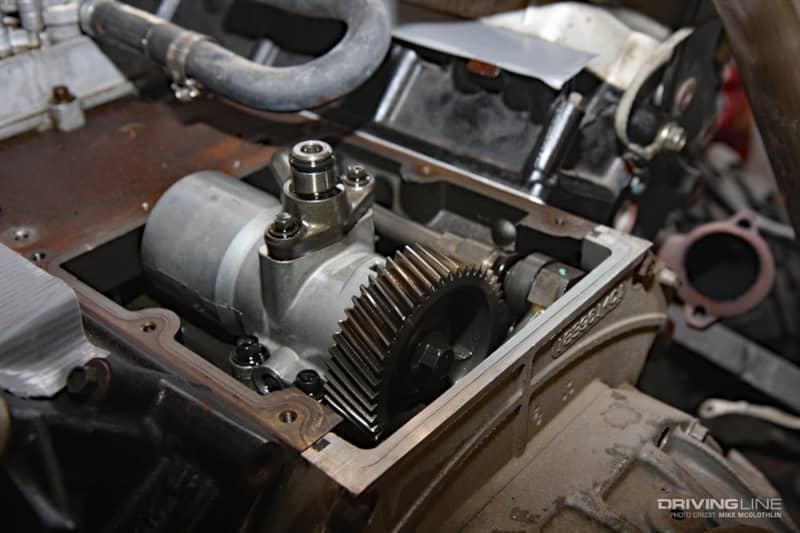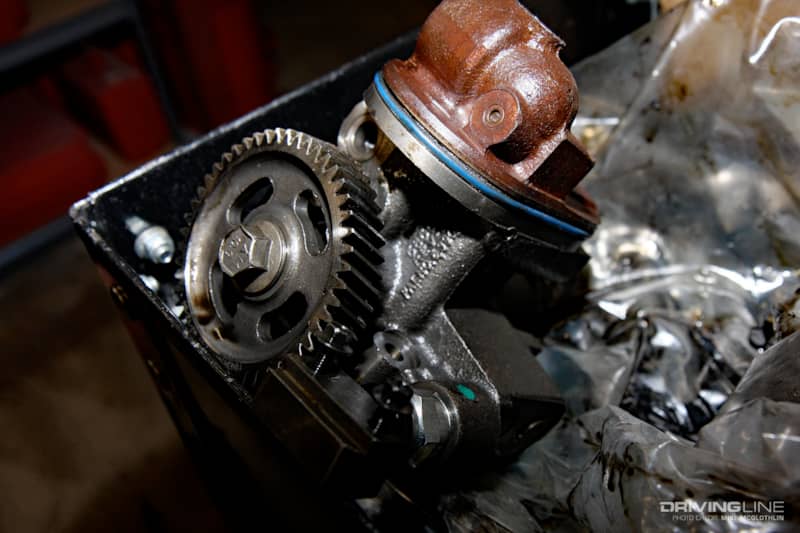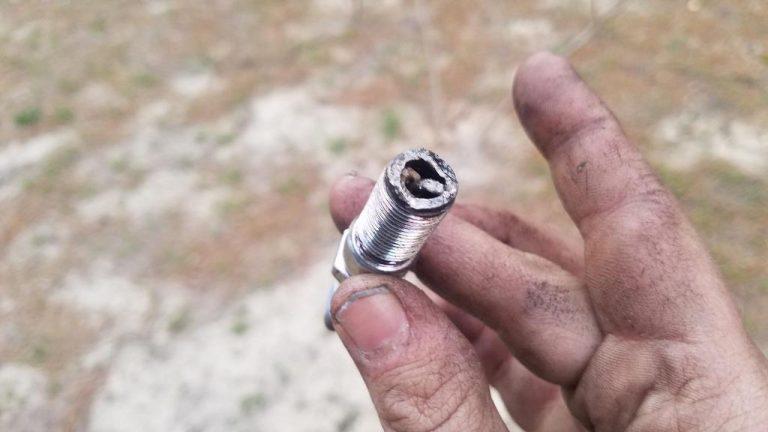Ford 6.0 High Pressure Oil Pump Failure Symptoms: Warning Signs
Ford 6.0 high-pressure oil pump failure symptoms include hard starting, erratic idling, and loss of power. These issues can compromise engine performance and reliability.
The high-pressure oil pump in Ford 6. 0 engines plays a critical role in maintaining optimal fuel injection pressure. Symptoms of failure can lead to significant engine performance problems. Hard starting, erratic idling, and loss of power are common indicators.
Identifying these symptoms early can help prevent further engine damage. Regular maintenance and timely repairs are essential for the longevity of your engine. Neglecting these signs can result in costly repairs and extensive downtime. Always consult a professional mechanic for accurate diagnosis and repair. Keeping your engine in top condition ensures smooth and reliable operation.
Introduction To Ford 6.0 High Pressure Oil Pump
The Ford 6.0 High Pressure Oil Pump (HPOP) is vital. It powers the fuel injectors in diesel engines. The HPOP ensures the engine runs smoothly. Without it, engine performance drops significantly.
Significance In Engine Performance
The High Pressure Oil Pump plays a crucial role. It delivers high-pressure oil to the fuel injectors. This allows the fuel to mix properly with air. This mixture is necessary for combustion. The right pressure ensures efficient engine performance.
A well-functioning HPOP provides optimal power. It helps in better fuel economy. The engine runs smoothly without hiccups. Any failure in the HPOP affects the entire engine system.
Common Issues
The Ford 6.0 HPOP can face several issues. These issues lead to engine problems. Recognizing symptoms early can prevent major damage.
- Low Oil Pressure: This is a common sign. It can cause poor engine performance.
- Hard Starting: Difficulty starting the engine is a major symptom.
- Stalling: The engine may stall unexpectedly.
- Oil Leaks: Visible oil leaks are a clear indication.
- Check Engine Light: This light often indicates an HPOP issue.
Address these issues promptly. Regular maintenance can help in early detection. This can save you from costly repairs.

Credit: www.drivingline.com
Early Warning Signs
Identifying the early warning signs of a failing Ford 6.0 High Pressure Oil Pump is crucial. Knowing these signs can help prevent major damage to your engine.
Hard Starting
One common symptom is hard starting. The engine struggles to start or takes longer than usual. This could indicate the oil pump is not providing enough pressure. Early diagnosis can prevent further damage.
Rough Idling
Another sign is rough idling. The engine may shake or vibrate more than normal. This happens because the oil pump isn’t maintaining the required pressure. Consistent rough idling should not be ignored.
Performance Issues
Ford 6.0 engines can develop high-pressure oil pump (HPOP) failures. These failures cause various performance issues. Recognizing these symptoms early can prevent severe damage. Below, we discuss common performance issues caused by HPOP failures.
Loss Of Power
One major symptom of HPOP failure is loss of power. The engine struggles to accelerate. It feels sluggish and unresponsive. This happens because the oil pump cannot maintain proper pressure. The injectors fail to deliver enough fuel to the engine.
Signs of power loss include:
- Difficulty accelerating
- Slow response to throttle
- Engine stalling during acceleration
Poor Fuel Efficiency
Poor fuel efficiency is another symptom of HPOP failure. The engine consumes more fuel but delivers less power. This inefficiency leads to increased fuel costs.
Indicators of poor fuel efficiency:
- Increased trips to the gas station
- Noticeable drop in miles per gallon (MPG)
- Black smoke from the exhaust
Keeping an eye on these symptoms can save you time and money. Early detection helps in maintaining your Ford 6.0 engine’s health.
Diagnostic Trouble Codes
The Ford 6.0 High Pressure Oil Pump (HPOP) plays a critical role in the engine’s performance. When the HPOP fails, it triggers Diagnostic Trouble Codes (DTCs). These codes help identify the specific issues within the engine system.
Common Error Codes
Several DTCs indicate HPOP failure. Here are the most common ones:
- P1211: Injection Control Pressure Higher/Lower Than Desired
- P1212: Injection Control Pressure Not Detected During Crank
- P2285: Injection Control Pressure Sensor Circuit Low
- P2290: Injection Control Pressure Too Low
Interpreting The Codes
Understanding these codes is crucial for diagnosing the issue. Let’s break down the interpretation:
| Code | Meaning | Action |
|---|---|---|
| P1211 | Pressure higher or lower than desired | Check pressure sensor and HPOP |
| P1212 | Pressure not detected during crank | Inspect wiring and connections |
| P2285 | Pressure sensor circuit low | Replace sensor if faulty |
| P2290 | Pressure too low | Examine HPOP and seals |
Each code provides specific information about the fault. By understanding these codes, you can take the right steps to fix the problem.
Visual Inspections
Visual inspections play a crucial role in identifying Ford 6.0 High Pressure Oil Pump failures. By thoroughly examining specific areas, you can spot early signs of trouble and take prompt action. This section will guide you through key visual inspection points.
Oil Leaks
Oil leaks are a common symptom of a failing High Pressure Oil Pump. Look for oil spots under your vehicle. Check the engine compartment for oily residues. Inspect around the oil pump for visible leaks. Use a flashlight to see hidden areas.
| Inspection Point | Signs to Look For |
|---|---|
| Under the Vehicle | Oil spots or puddles |
| Engine Compartment | Oily residues |
| Around the Oil Pump | Visible leaks |
Addressing oil leaks early can prevent serious engine damage. Regular checks can save costly repairs.
Damaged Components
Damaged components also indicate High Pressure Oil Pump issues. Inspect the oil pump housing for cracks or wear. Check the oil lines for abrasions or breaks. Examine gaskets and seals for signs of wear or damage.
- Oil Pump Housing: Look for cracks or surface wear.
- Oil Lines: Inspect for abrasions or breaks.
- Gaskets and Seals: Check for wear or damage.
Replacing damaged components can restore pump functionality. Regular inspections help maintain your vehicle’s health.

Credit: www.youtube.com
Engine Noise
The engine noise can reveal many issues in a vehicle. One such problem is the Ford 6.0 high pressure oil pump failure. Let’s dive into the different types of engine noises that can indicate this specific issue.
Unusual Sounds
Unusual sounds from the engine can be alarming. These noises often signal trouble. With a failing high pressure oil pump, you might hear sounds that are out of the ordinary.
- Whining sounds are a common indicator.
- A sudden increase in noise level is another sign.
Always pay attention to these sounds. They can save you from bigger problems down the road.
Knocking And Ticking
Two specific sounds to watch for are knocking and ticking. These noises often indicate high pressure oil pump issues.
Knocking sounds may come from the engine block. This can happen due to improper lubrication. On the other hand, ticking sounds are usually more rapid. They can be heard near the top of the engine.
Here’s a quick comparison:
| Type of Sound | Possible Cause |
|---|---|
| Knocking | Improper lubrication |
| Ticking | Rapid noise near the top of the engine |
Both these sounds should not be ignored. They often indicate a failing high pressure oil pump. Addressing these issues early can prevent more serious damage.
Impact On Overall Engine Health
The Ford 6.0 high pressure oil pump plays a crucial role in engine performance. A failure in this pump can significantly impact the engine’s health. This can lead to various issues and long-term damage.
Long-term Damage
A failing high pressure oil pump can cause extensive damage over time. The engine may not receive adequate lubrication, leading to increased friction. This can result in excessive wear and tear on engine components.
Long-term damage includes:
- Increased engine wear
- Reduced efficiency
- Higher repair costs
Each of these issues can drastically shorten the engine’s lifespan. Addressing the oil pump failure early can prevent these problems.
Maintenance Tips
Regular maintenance is key to preventing oil pump failure. Follow these maintenance tips:
- Check oil levels regularly. Low oil can damage the pump.
- Use high-quality oil. This ensures proper lubrication.
- Schedule routine inspections. A mechanic can spot early signs of failure.
These steps can help maintain the health of the Ford 6.0 engine. Keeping the oil pump in good condition can save you money and time.
Addressing The Issue
Addressing Ford 6.0 High Pressure Oil Pump (HPOP) failure is crucial. Identifying the right repair and preventive measures can save you money and stress. This section dives into possible solutions and precautions.
Repair Options
When HPOP fails, you have various repair options. Choosing the right one depends on the severity and your budget.
- Rebuild the Pump: This involves replacing worn-out parts. It’s cost-effective but requires skilled hands.
- Replace with OEM Parts: Original Equipment Manufacturer parts guarantee compatibility and performance. They are often more reliable.
- Aftermarket Upgrades: These can enhance performance but may void warranties. Use them with caution.
Below is a table summarizing these options:
| Option | Pros | Cons |
|---|---|---|
| Rebuild the Pump | Cost-effective | Requires skill |
| Replace with OEM Parts | High reliability | Higher cost |
| Aftermarket Upgrades | Enhanced performance | May void warranty |
Preventive Measures
Preventing HPOP failure can save you from costly repairs. Here are some effective measures:
- Regular Oil Changes: Use high-quality oil and change it regularly. This keeps the pump well-lubricated.
- Monitor Oil Levels: Check oil levels frequently. Low oil can cause pump damage.
- Use Fuel Additives: Additives can keep the fuel system clean. This ensures the HPOP runs smoothly.
Adopting these measures can extend the life of your HPOP.

Credit: www.drivingline.com
Frequently Asked Questions
Will A 6.0 Powerstroke Run With A Bad Hpop?
No, a 6. 0 Powerstroke will not run with a bad HPOP. The high-pressure oil pump is essential for fuel injection.
What Are The Symptoms Of A High Pressure Oil Pump Failure?
Common symptoms include engine misfires, rough idling, low oil pressure, and difficulty starting the engine. You might also notice unusual noises.
What Are The Symptoms Of A High Pressure Fuel Pump Failure On A 6.0 Powerstroke?
Common symptoms of high pressure fuel pump failure on a 6. 0 Powerstroke include hard starting, rough idling, stalling, and reduced power. You may also notice white or black smoke from the exhaust. Another sign is a decrease in fuel efficiency.
How Many Hours To Replace 6.0 Hpop?
Replacing a 6. 0 HPOP typically takes 4 to 6 hours. The exact time depends on mechanic experience and vehicle condition.
Conclusion
Recognizing Ford 6. 0 high pressure oil pump failure symptoms is crucial. Early detection prevents costly repairs and downtime. Regular maintenance can extend your engine’s life. Stay vigilant for unusual noises, leaks, or performance drops. Addressing these symptoms promptly ensures your Ford 6.
0 runs smoothly and efficiently. Keep your vehicle in top shape with routine checks.






